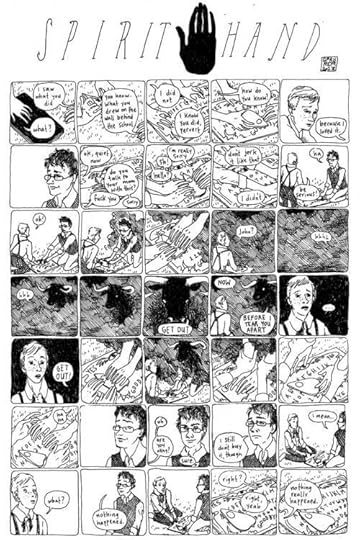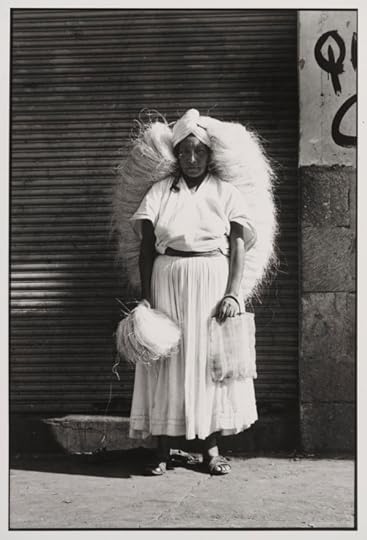Robert Levy's Blog, page 6
September 7, 2018
baldespendus:Mary Ellen Mark, 1967. By Ralph Gibson.
oh-atlantic:Ralph Gibson
ronulicny:
“Baby’s Hand And Guitar”, 1961
By: RALPH GIBSON….
September 5, 2018
iliketomoviemovie:
Life in turmoil
Koyaanisqatsi, 1982
vorpalizer:
Webcomic Wednesday: “Spirit Hand” by Julia...

Webcomic Wednesday: “Spirit Hand” by Julia Gfrörer
When I wrote my post on Ghostbusters the other day I was trying to make the point that for genre fiction, setting matters. I don’t just mean the physical location, though that’s part of it – I mean everything that surrounds the stuff that makes what you’re writing science fiction, or fantasy, or horror, or romance, or whatever. The whole idea behind genre is that it’s kind of a literary Lunchables – a little box of prepackaged tropes and techniques you can dispose at will for the same basic effect. It gets real boring real fast if you serve it up the same way every time. The tighter you tie those general/generic tropes and techniques to the very specific ideas and images you’re employing in your story – the more you customize the box, as it were – the stronger your story will be.
What Ghostbusters did with its vividly realized Manhattan setting and Dan Aykroyd’s preceding lifetime of amateur paranormal expertise, “Spirit Hand,” a brief but memorable one-pager by Julia Gfrörer, does with interpersonal dynamics. Its two teenaged protagonists have an intriguingly intimate yet obviously lopsided and proscribed friendship: John, the dark-haired boy, clearly feels free to be a bull in the china shop of his nameless friend’s emotions, professing love for his bathroom-stall-type scrawlings one moment, making a rough joke about his dead mother the next. The friend seems fond enough of their relationship to put up with it, and with much more, as it turns out: When the ouija board they’re using reveals the presence of (appropriately) a bull-headed demon attached to John, all he does is grab ahold and wish it away. The creature’s warnings go unheeded, its presence unrevealed to its human counterpart; it’s a cloud of blackness in the middle of the page that quickly dissipates back out into Gfrörer’s thin and tremulant linework. The effect is striking, unnerving, and sad, and it feels like if you swapped these two kids out for any others it wouldn’t work. Those details may be irrelevant to the genre, but they’re vital to genre storytelling.
September 3, 2018
brooklynmuseum:
Happy Labor Day! Since 1894, the first Monday in...

Happy Labor Day! Since 1894, the first Monday in September has marked celebrations to honor the past, present, and future of the labor movement in the United States. In honor of labor around the world, we’re sharing a work from Half the Picture by Mexican photographer Graciela Iturbide. One of Mexico’s best-known photographers, Iturbide’s breakthrough series focused on the indigenous Zapotec people in the town of Juchitán de Zaragoza, Oaxaca, where women dominate all aspects of social life, from the economy to religious rituals. Vendedora de Zacate (Sponge Vendor), Oaxaca pictures a woman who carries her wares on a string wrapped around her head. Approaching her subjects directly and frontally, Iturbide characterized her photographic approach as a kind of “complicity.”
Graciela Iturbide (Mexican, born 1942). Vendedora de Zacate (Sponge Vendor), Oaxaca, 1974. Gelatin silver photograph. Brooklyn Museum, Gift of Marcuse Pfeifer, 1990.119.39. © artist or artist’s estate






























